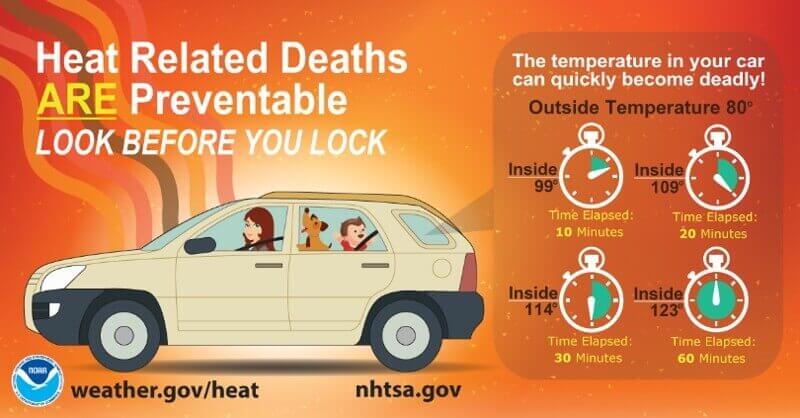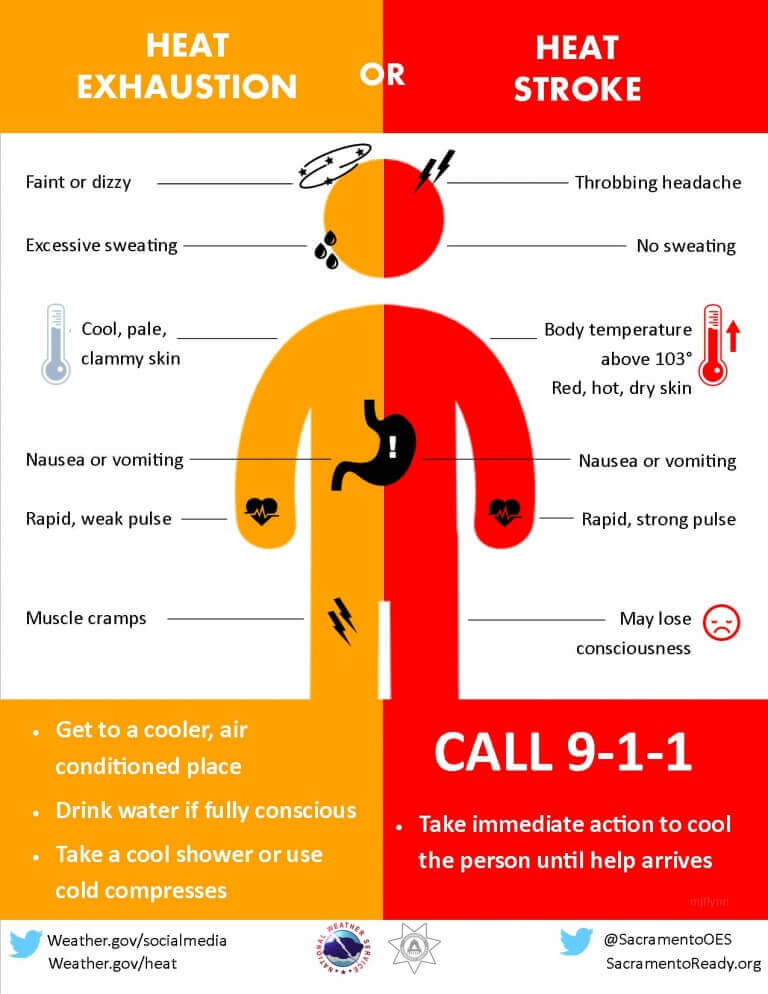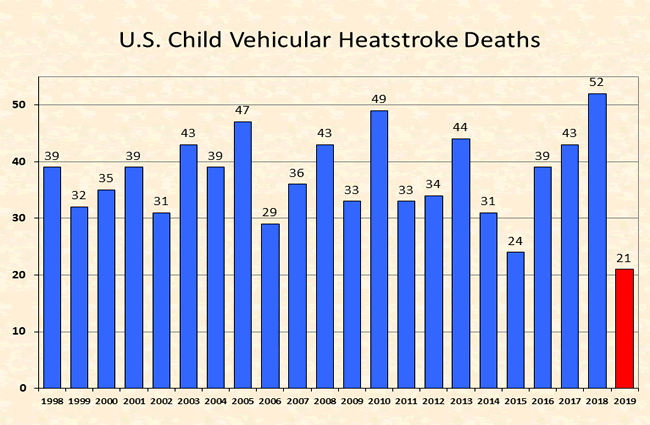Summers in Central Texas can be hot. Really hot! In fact, heat is one of the leading weather-related killers in the United States, resulting in hundreds of fatalities each year and even more heat-related illnesses. Most child, vehicle-heat-related deaths occur in the month of July, and on average, over 35 children die each year from being left in a vehicle. To help you keep your cool and make sure that you and your family stay safe, we put together the following important heat safety information.

Difference between a Heat Advisory, Watch and Warning:
Each National Weather Service Forecast Office issues some or all of the following heat-related products as conditions warrant.
Excessive Heat Warning:
An Excessive Heat Warning is issued within 12 hours of the onset of extremely dangerous heat conditions. The general rule of thumb for this Warning is when the maximum heat index is expected to be greater than 113° F or the temperature is expected to be 105° F or higher; however, these criteria vary across the country, especially for areas not used to extreme heat conditions. If you don’t take precautions immediately when conditions are extreme, it may lead to extreme illness or even death.
Heat Advisory:
A Heat Advisory is issued within 12 hours of the onset of extremely dangerous heat conditions. The general rule of thumb for this Advisory is when the heat index is expected to be greater than 108° F or the temperature is expected to be greater than or equal to 103° F; however, these criteria vary across the country, especially for areas that are not used to dangerous heat conditions. Take precautions to avoid heat illness. If you don’t take precautions immediately when conditions are extreme, it may lead to extreme illness or even death.
Heat Exhaustion and Stroke - Signs, Symptoms and First Aid:
During extremely hot and humid weather, your body’s ability to cool itself is challenged. When the body heats too rapidly to cool itself properly, or when too much fluid or salt is lost through dehydration or sweating, body temperature rises and you or someone you care about may experience a heat-related illness. It is important to know the symptoms of excessive heat exposure and the appropriate responses. Older adults, children, and individuals who are sick or overweight are at a greater risk of experiencing heat-related illnesses.
Heat Cramps (heat cramps may be the first sign of heat-related illness, and may lead to heat exhaustion or stroke)
- Symptoms: Painful muscle cramps and spasms usually in legs and abdomen; Heavy sweating
- First Aid: (1) Apply firm pressure on cramping muscles or gently massage to relieve spasm. (2) Give sips of water unless the person complains of nausea, then stop giving water
Heat Exhaustion
- Symptoms: Heavy sweating; Weakness; Cool, pale, clammy skin; Fast, weak pulse; Possible muscle cramps; Dizziness; Nausea or vomiting; Fainting
- First Aid: (1) Move person to a cooler environment. (2) Lay person down and loosen clothing. (3) Apply cool, wet cloths to as much of the body as possible. (4) Fan or move victim to air conditioned room. (5) Offer sips of water. (6) If person vomits more than once, seek immediate medical attention.
Heat Stroke
- Symptoms: Altered mental state; One or more of the following symptoms: throbbing headache, confusion, nausea, dizziness, shallow breathing; Body temperature above 103°F; Hot, red, dry or moist skin; Rapid and strong pulse; Faints, loses consciousness
- First Aid: (1) Heat stroke is a severe medical emergency. Call 911 or get the victim to a hospital immediately. Delay can be fatal. (2) Move the victim to a cooler, preferably air-conditioned, environment. (3) Reduce body temperature with cool cloths or bath. (4) Use fan if heat index temperatures are below the high 90s. A fan can make you hotter at higher temperatures. (5) Do NOT give fluids.

Dangers of Leaving Pets, Children, or the Mobility Impaired in a Hot Car:
Each year, dozens of children and untold numbers of pets left in parked vehicles die from hyperthermia. Hyperthermia is an acute condition that occurs when the body absorbs more heat than it can handle. Hyperthermia can occur even on a mild day. Studies have shown that the temperature inside a parked vehicle can rapidly rise to a dangerous level for children, pets and even adults. Leaving the windows slightly open does not significantly decrease the heating rate. The effects can be more severe on children because their bodies have not developed the ability to efficiently regulate its internal temperature.
Check out the video from the National Weather Service on how quickly a car can heat up in the sun.
U.S. Child Vehicular Heatstroke Deaths:
Below is data from Department of Meteorology & Climate Science at San Jose State University regarding U.S. child vehicular heatstroke deaths. Heatstroke death can occur quickly in persons left unattended in vehicles. Children, mobility-impaired persons, and pets are particularly susceptible to heat-related vehicle deaths. More info can be found here.

Bar graph showing heat-related deaths due to children left in vehicles from 1998-2019 (www.noheatstroke.org/original)


